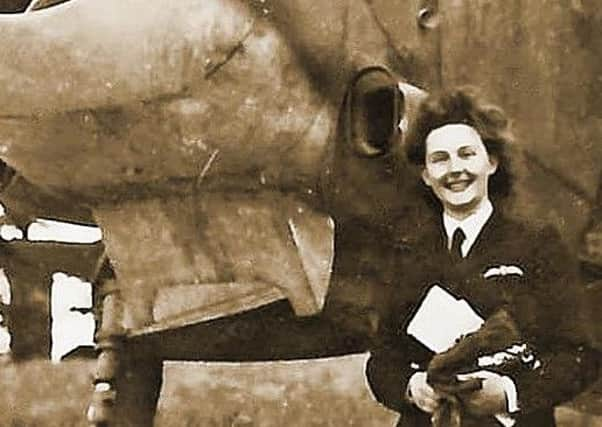Obituary: Betty Huggett, Spitfire pilot in Second World War


Betty Huggett was one of a group of 17 Womens Auxiliary Air Force who were recruited into the Air Transport Auxiliary (ATA) in May 1944. Huggett went solo that month after just 11 hours of flight training. The principal job of the ATA girls was to ferry new or repaired aircraft from factories to the command aerodromes – “Anything to Anywhere” was the slogan. It was dangerous but vital work. Huggett’s logbook shows that her flight schedule was unrelenting – many “air taxi flights” included her first Spitfire flight.
Huggett was posted to No 4 Ferry Pool at Prestwick in May 1945 and was given orders to fly a Barracuda torpedo bomber from Prestwick to Lossiemouth. Her flight plan took her over the Firth of Forth and then northwards. While over the Forth the weather deteriorated badly; the clouds enveloped the plane and she experienced much turbulence.
Advertisement
Hide AdAdvertisement
Hide AdHuggett had been trained to return to base in the event of bad weather: the aircraft were expensive and vital for the war effort. But as she turned, the plane lost height severely and Huggett just had time to brace herself as the plane hit the water. Years later she recalled: “It sat there on the surface for a few moments, then started sinking. I must have gone down quite decently, like in a lift.” She wrote in her log book: “All things considered, it was a good landing.”
The aircraft settled on the sea bed. Huggett took a deep breath and released the straps in her cockpit and floated to the grim, blackened surface of the Forth. She had no life jacket and was only wearing normal ATA uniform. She shouted for help.
Visibility was bad but a trawler, Provide, from the nearby fishing port of St Monans heard her cries and steamed towards her. “Hang on, laddie,” the skipper, John Morris, cried reassuringly. She was immediately taken to the Royal Naval Air Station at Crail to be warmed up with a cup of tea and then transferred to a heated cradle built for rescued fighter pilots.
She made a number of flights after her adventure in the Firth of Forth, including four more Barracuda flights, before leaving the ATA in August, two days after V J Day. She was fondly known throughout the service as the “ATA Mermaid” after her sinking.
Betty Huggett (née Keith-Jopp) was the niece of the one-eyed, one-armed Stewart Keith-Jopp who was one of the original airmen in ATA. She was born into an army family and worked as a secretary and did war work on Salisbury Plain. She married Major Peter Huggett in 1950, moving to Rhodesia (Zimbabwe) where he worked in insurance. In 1964, they moved to Eastern Cape in South Africa.
She seldom spoke of her exploits with the ATA, but in the late 1990s Giles Whittell interviewed her for his book, Spitfire Women of World War Two. When the book was published, Huggett was interviewed by BBC Radio Scotland in 2007 and her escape attracted much attention – especially from the local MP, Nigel Griffiths. Mr Griffiths approached the prime minister, Gordon Brown (also a Fife MP), with a proposal that the ladies from the ATA should belatedly be honoured. In 2008 all the surviving lady ATA pilots were presented with a veterans’ badge at Number 10. Mrs Huggett was represented by her daughter, Caroline.
In 2013, Bill Morris, a third generation of the trawler skipper’s family and a resident of St Monans, initiated plans for a salvage operation of the plane and made inquiries about the ditching: he was keen that the local folk who had come to Huggett’s rescue should be suitably remembered.
Inquiries suggested that the plane was ditched close to the swimming baths in St Monans, but such was the secrecy at the time there was little written evidence of the event.
Advertisement
Hide AdAdvertisement
Hide AdBill Morris said in 2013: “The pilot described the rescue as a miracle, so I think we should do something to recognise what these people did.”
The lady pilots of the ATA were brave pioneers who flew planes in challenging conditions often with poor navigation systems. Their training was demanding and brief but provided them with the necessary skills to fly airplanes on perilous missions.
ATA’s Spitfire women defied the belief that only male pilots could fly fighter planes – in fact, the lady ATA pilots were trailblazers.
Typically modest, Huggett admitted years later: “I so wanted to be useful.”
Betty Huggett is survived by her two daughters.